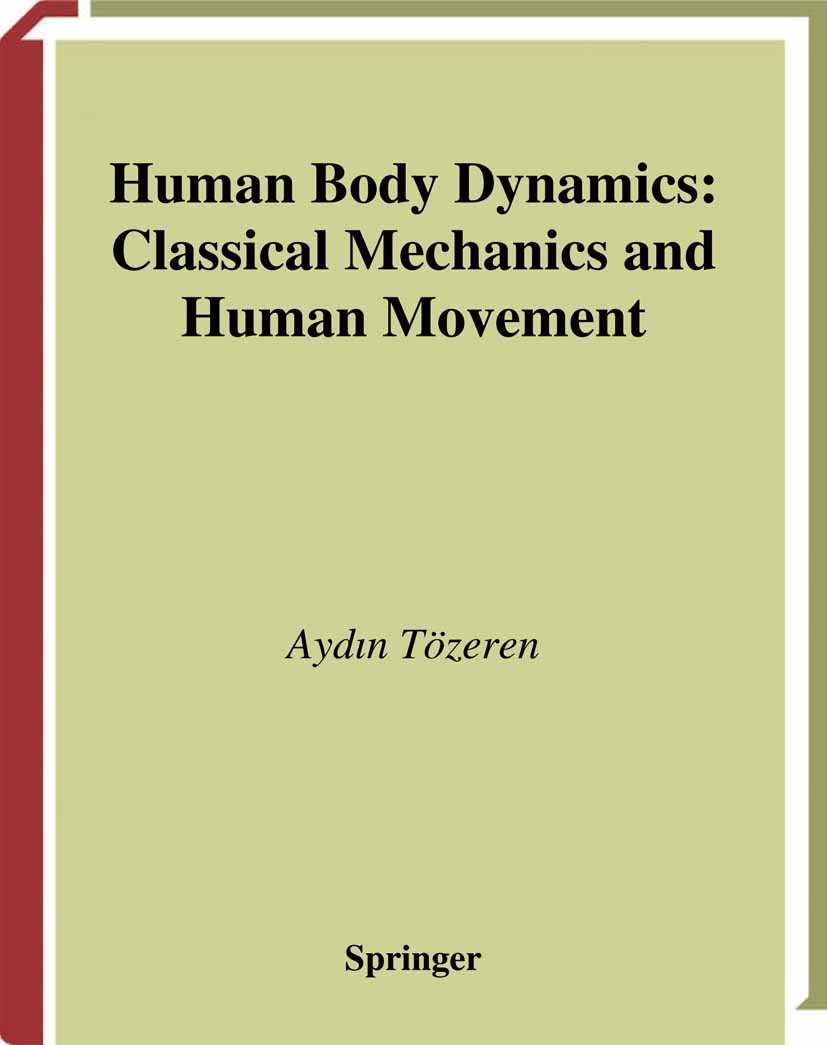| 书目名称 | Human Body Dynamics | | 副标题 | Classical Mechanics | | 编辑 | Aydın Tözeren | | 视频video | http://file.papertrans.cn/430/429008/429008.mp4 | | 概述 | Request lecturer material: | | 图书封面 |  | | 描述 | “The human body is a machine whose movements are directed by the soul,” wrote René Descartes in the early seventeenth century. The intr- sic mechanisms of this machine gradually became clear through the hard work of Renaissance scientists. Leonardo da Vinci is one such scientist from this period of enlightenment. In pursuit of knowledge, Leonardo dissected the bodies of more than 30 men and women. He sawed the bones lengthwise, to see their internal structure; he sawed the skull, cut through the vertebrae, and showed the spinal cord. In the process, he took extensive notes and made carefully detailed sketches. His drawings d- ferentiated muscles that run across several joints from those muscles that act on a single joint. “Nature has made all the muscles appertaining to the motion of the toes attached to the bone of the leg and not to that of the thigh,” wrote Leonardo in 1504 next to one of his sketches of the lower extremity, “because when the knee joint is flexed, if attached to the bone of the thigh, these muscles would be bound under the knee joint and would not be able to serve the toes. The same occurs in the hand owing to the flexion of the elbow. ” Another Renaissance scho | | 出版日期 | Textbook 2000 | | 关键词 | Body; Dynamics; Human; biomechanics; bone; mechanics; sports injury; statics | | 版次 | 1 | | doi | https://doi.org/10.1007/b97432 | | isbn_softcover | 978-1-4757-7390-3 | | isbn_ebook | 978-0-387-21691-1 | | copyright | Springer Science+Business Media New York 2000 |
The information of publication is updating

|
|
 |Archiver|手机版|小黑屋|
派博传思国际
( 京公网安备110108008328)
GMT+8, 2025-11-14 17:23
|Archiver|手机版|小黑屋|
派博传思国际
( 京公网安备110108008328)
GMT+8, 2025-11-14 17:23


